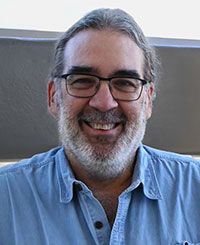Dr. Hawdon has extensive training in hookworm biology and molecular biology, and has done pioneering research in these areas. He has spent his 24-year academic career studying hookworms, and his laboratory group is the first to study mechanistic aspects of signaling during hookworm infection. Dr. Hawdon earned his B.S. in Animal Science at Pennsylvania State University, and his PhD in Parasitology from University of Pennsylvania. He completed his postdoctoral fellowship at the MacArthur Center for Molecular Parasitology at Yale University School of Medicine. Before joining GW in 2000, Dr. Hawdon was an Associate Research Scientist in the Medical Helminthology Laboratory in the Department of Epidemiology and Public Health at Yale University School of Medicine. He is a member of the American Society of Parasitologists, the Helminthological Society of Washington, and the American Association of Veterinary Parasitologists.
For a list of publications, please visit the Hawdon lab website.
Research
Dr. Hawdon's research interests focus around the hookworm infectious process. The developmentally arrested infective stage receives a host-specific signal that re-initiates suspended developmental pathways that culminate in development of the adult parasite. Dr. Hawdon's laboratory is investigating the molecular events of this activation to parasitism in the framework of dauer recovery in the free-living nematode Caenorhabditis elegans. Using a novel in vitro activation assay that Dr. Hawdon developed, his lab confirmed that hookworm infective larvae use the same signaling pathways during activation that C. elegans dauers use during recovery. Dr. Hawdon is continuing to dissect the pathways in hookworm larvae by identifying the host-specific signal and its receptor, the molecules involved in the transduction of this signal, and the molecular events of development. Dr. Hawdon is also interested in the population genetics of natural populations of hookworms infecting humans. His studies have demonstrated the presence of genetically isolated populations of the human hookworm Necator americanus in China. Variation in hookworm populations will complicate the design of recombinant vaccines and effective drug-based control strategies. Future studies will investigate the effect of transmission patterns on the intra- and interhost population genetics of hookworms. Dr. Hawdon is also pursuing sanitation-based control strategies for soil transmitted helminths in China.
For more information, please visit the Hawdon Lab website.
Teaching
BISC 2339 - Parasitology , MICR 6220 - Biology of Parasitism
